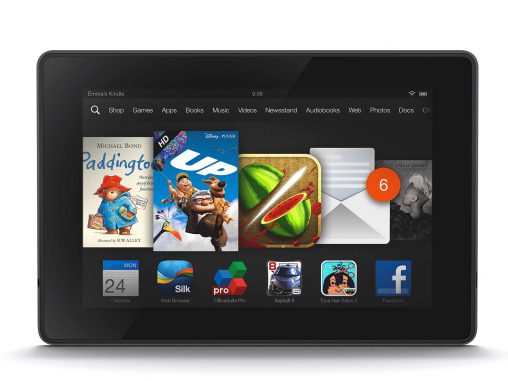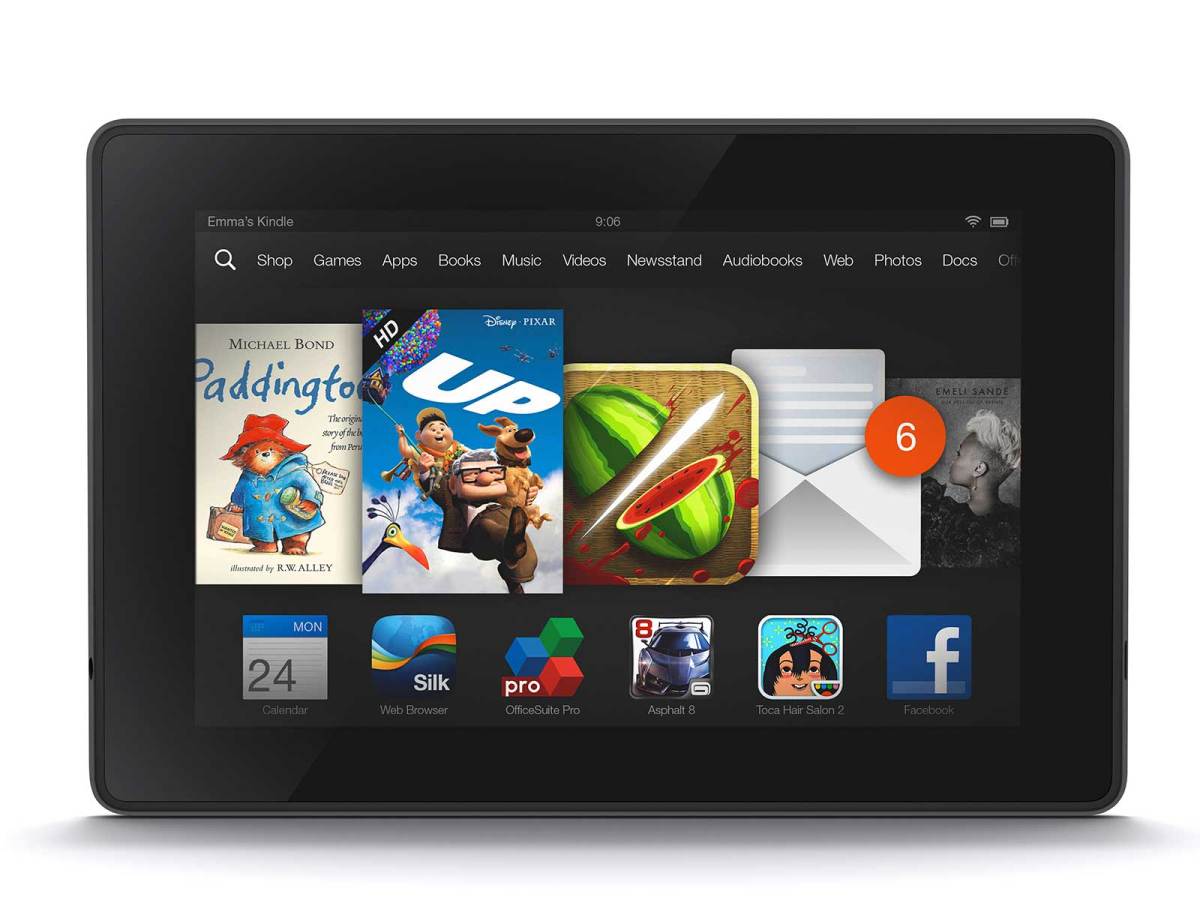“Challenging times. The arrival of electronic reading devices has been a gamechanger.”
— Daniel Chard, publisher, in The Silkworm (JK Rowling as Robert Galbraith)

A battered and bruised Afghanistan war hero dabbles with double-dealing divorcees, attempts to free himself of a maniacal sociopath ex-fiancée and slowly transitions from lone wolf private investigator to budding mentor, all while solving the case of a missing novelist. JK Rowling’s second crime novel under the guise of Robert Galbraith, The Silkworm, turned out to be another inspired outing for one-legged dick Cormoran Strike and an apt choice for reviewing Amazon’s newish Kindle Fire HD tablet (RRP $189).
It was a circuitous case of inverse serendipity that led to this occasion. Having completed the first installment in Rowling’s sempiternal follow-up to the Harry Potter series, The Cuckoo’s Calling, in scant time, I returned to that book’s place of purchase, Dymocks Neutral Bay, only to find it closed at precisely 6:03pm. Now, this is three minutes after the advertised closing time but this is supposed to be an industry in crisis — “We need readers, more readers. Fewer writers,” quips the deceased’s publisher in The Silkworm — so it is a tad chagrining that otherwise loyal customers are given such little time outside business hours to travel to bricks and mortar stores.
Anyone who has ever fallen into Rowling’s gossamer will know her elaborately plotted tales are addictive, so the thought of waiting even a day to start on The Silkworm felt foreign. Amazon’s local press team had sent over a Kindle Fire HD to review earlier that week and, despite my preference for savouring books as books, I decided the best way to properly test out the device would be to set it the arduous task of transporting me through London in Black Cabs and on the Tube in pursuit of the shadowy literary figures that inhabit — sometimes duplicitously and, unfortunately for some, not till the final page — The Silkworm.
There has been much handwringing about the breadth and depth of content piracy in Australia, especially in relation to visual media like films and TV. Technology websites like Gizmodo, Cnet and the now dormant Delimiter have all but doubled in size gorging on this topic. Not as much is made about literary piracy, which is surprising, considering how easy it is to find free versions of popular books online and in the Kindle’s specific format. It makes you wonder, if only there were Game of Thrones books for people to download nefariously, just to give this issue some publicity!
(These tech sites and others did write a few articles about literary piracy several years ago, but none were written with the verve or urgency of TV piracy articles, nor did they attract much interest. A Gizmodo article discussing ebook piracy from 8 January 2010 has two comments; there are 103 comments on a TV piracy yarn from 2 June 2014.)
The only previous book I’ve read on a Kindle was Richard Bachman’s The Long Walk on an early-model E Ink reader with no backlighting; the screen engineered to resemble the page of a physical book. The Kindle Fire HD is more a fully-fledged tablet than an e-reader, with an internet browser, social media apps, some productivity applications and front and back facing cameras. Because of these broad uses, the Kindle Fire HD does away with E Ink and has a LCD screen with backlighting, not unlike an iPad or a Samsung Galaxy Tab. My January 2011 experience of The Long Walk was pleasant enough, though I did find the screen dilating every time you ‘turned’ a page very unsettling, and although I’ve seen countless commuters reading tomes on their backlit tablets, I was keen to see just how pained-blink-inducing or otherwise this system was. Turns out, it is a vast improvement.
The first positive of the Kindle Fire HD is the seamless scrolling from page to page, known in e-reader nomenclature as ‘locations’. There is no stuttering moment of thought suspension while the screen fills with black like blood squeezed in a microscope slide before separating into the myriad minuscule dots that make up the next location. This makes for a much faster reading experience and the touchscreen responsiveness — there are no push-touch buttons to move back and forth and certainly no need for a QWERTY keyboard like on E Ink models — enables automatic bookmarking, highlighting, chapter search and pivoting a la multitasking between the reading material and the Kindle Fire HD’s other functions. Another positive is that with a backlight, you can read the Kindle Fire HD in bed with all the lights off. The disadvantage is that the battery drains much, much faster, and its life is shorter than the time it takes to read a 454-page book.
Touchiness empowers an even greater function; an asset of the Kindle I discovered by accident that really gives the device an oomph when compared to the physical word. Read Rowling regularly and you get the impression she writes her novels with a thesaurus by her side, constantly dipping in to pull out another adjective or adverb — her love of qualifiers is decidedly unOrwellian — and save her bizarre predilection for using the adverb ‘coolly’ to carry speech, she has an amusing preoccupation with never using the same word twice. Rowling mixes her ‘peripatetics’, ‘impecuniouses’ and ‘capriciouses’ with classically derived neologisms — she constantly revisits Greek and Roman mythology for obscure adjectival forms — and such is the hassle of putting down a book and picking up a dictionary, especially during one of The Silkworm’s frequently-occurring gripping sequences, that if the meaning can’t be derived from the words around it, one is more inclined to read on without every finding out what ‘untrammelled’ meant. The Kindle Fire HD provides a panacea for this: longpress a word and a dialogue box will pop up explaining the term from the on-board dictionary. If you are online at the time (Wi-Fi only), this box can be switched to a Wikipedia page, providing in-depth detail on the concept. Reading is the absolute best way to increase your vocabulary and the Kindle Fire HD facilitates this simply and effectively. It is a gadget that truly helps you to learn.
But to learn one must be enthralled. Only if the device is providing a satisfactory reading experience — not just a quick scan but a perusal — will the owner be invested enough to exploit this feature.
The Kindle Fire HD’s reading experience is very satisfying and you do find yourself flicking through the locations much more regularly than you would turn a page, which always seems to imbue a sense of forward progression, like I am achieving something, however small. On the bottom left of the screen you can customise the Kindle Fire HD to display the reading time remaining in the chapter or book — it quickly learns how fast you read — and this does ably replicate the sense of distance to destination the sheer tactility of a physical book embodies without any time mechanism.
What can’t be replicated, however, is the unrivalled self-satisfaction that comes from turning that final paper page and then reaching for the cardboard back cover with the tip of your middle finger, dragging it near to complete the literal reading of a book from cover to cover. That unbridled joy of completeness is simply not there on a Kindle, and I am reminded of the lobotomy ‘victim’ Howard Dully who told National Public Radio in 2005 that, “I’ve always felt different, wondered if something’s missing from my soul”.
People who read a lot tend to have the quixotic idiosyncrasy of showing guests their bookcase or, at the very least, making sure it is visible in the home’s living spaces. I have read the 1,400-plus objectivist pages that make up Atlas Shrugged, and it has a minuscule typeface; flicking through that ode to individualism is a way of demonstrating my own individualism. My bookshelf is replete with Pynchon’s oeuvre, Dickens’ bibliography and the five extant books in The Song of Ice and Fire (they should make a TV show out of those). This rich tapestry of paper, cardboard and wood has brought me so much joy, occasionally invoked tears and moulded me into the person I am today. One of the books used in the cover art to promote the Kindle Fire HD, The Perks of Being a Wallflower, is my all-time favourite book. To wave my hands in front of that book and all the others is to say, ‘this is who I am’.
People are less impressed when I hand them my Kindle, show them how to unlock it and then if you tap the bottom of the screen there tap it again lightly and there hit the home button and now wait it’s a bit slow then up the top in the menu bar tap books and there are the two books I have sideloaded on so far. That is not who I am.
Only when coming to end of The Silkworm did I realise that I was reading a book about change written by a changed author on a device representing change. The previous book I had read on my previous Kindle, the aforementioned The Long Walk, was written by Stephen King — Richard Bachman was his nom de plume d’évasion — he wanted to disrupt the publishing industry conceit that an author can only release one book per year (“I think that a number of writers have disproved that by now,” King said much later). As the epigram on this story declares, Rowling as Galbraith uses The Silkworm to challenge publishing, much like Amazon’s Kindle is challenging the bookstore and Amazon itself is challenging traditional retail (not to mention Amazon challenging our collective suspension of disbelief).
I am a reluctant fan of the Kindle Fire HD: it’s a nifty reading device and the extra functions mean it can just about pass for a tablet if you are desperate. The Silkworm is good too. You should read both.

